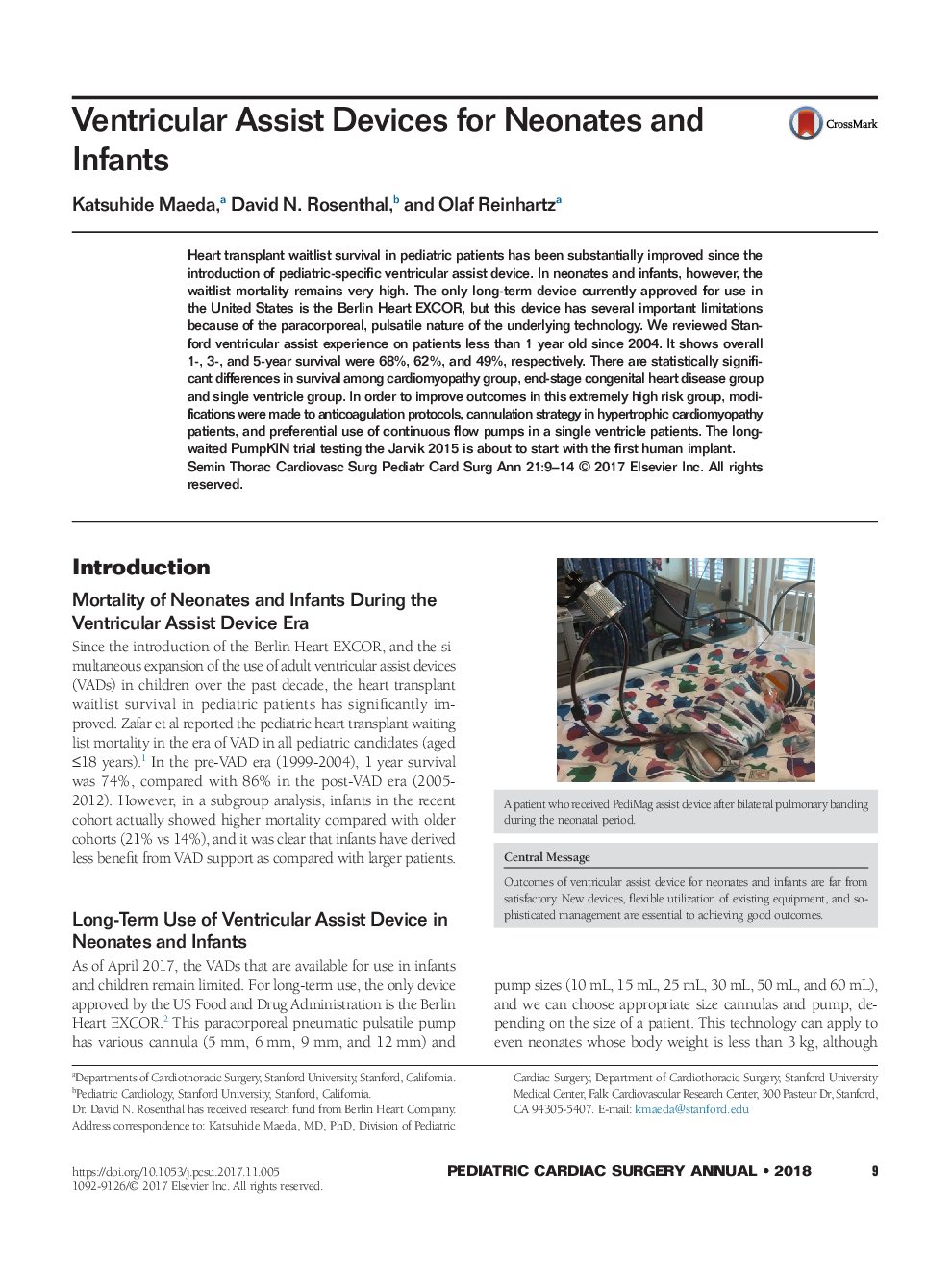| Article ID | Journal | Published Year | Pages | File Type |
|---|---|---|---|---|
| 8679208 | Seminars in Thoracic and Cardiovascular Surgery: Pediatric Cardiac Surgery Annual | 2018 | 6 Pages |
Abstract
Heart transplant waitlist survival in pediatric patients has been substantially improved since the introduction of pediatric-specific ventricular assist device. In neonates and infants, however, the waitlist mortality remains very high. The only long-term device currently approved for use in the United States is the Berlin Heart EXCOR, but this device has several important limitations because of the paracorporeal, pulsatile nature of the underlying technology. We reviewed Stanford ventricular assist experience on patients less than 1 year old since 2004. It shows overall 1-, 3-, and 5-year survival were 68%, 62%, and 49%, respectively. There are statistically significant differences in survival among cardiomyopathy group, end-stage congenital heart disease group and single ventricle group. In order to improve outcomes in this extremely high risk group, modifications were made to anticoagulation protocols, cannulation strategy in hypertrophic cardiomyopathy patients, and preferential use of continuous flow pumps in a single ventricle patients. The long-waited PumpKIN trial testing the Jarvik 2015 is about to start with the first human implant.
Related Topics
Health Sciences
Medicine and Dentistry
Cardiology and Cardiovascular Medicine
Authors
Katsuhide Maeda, David N. Rosenthal, Olaf Reinhartz,
